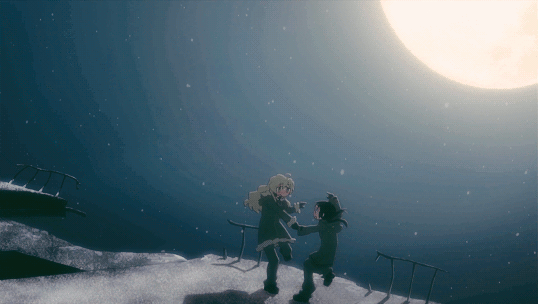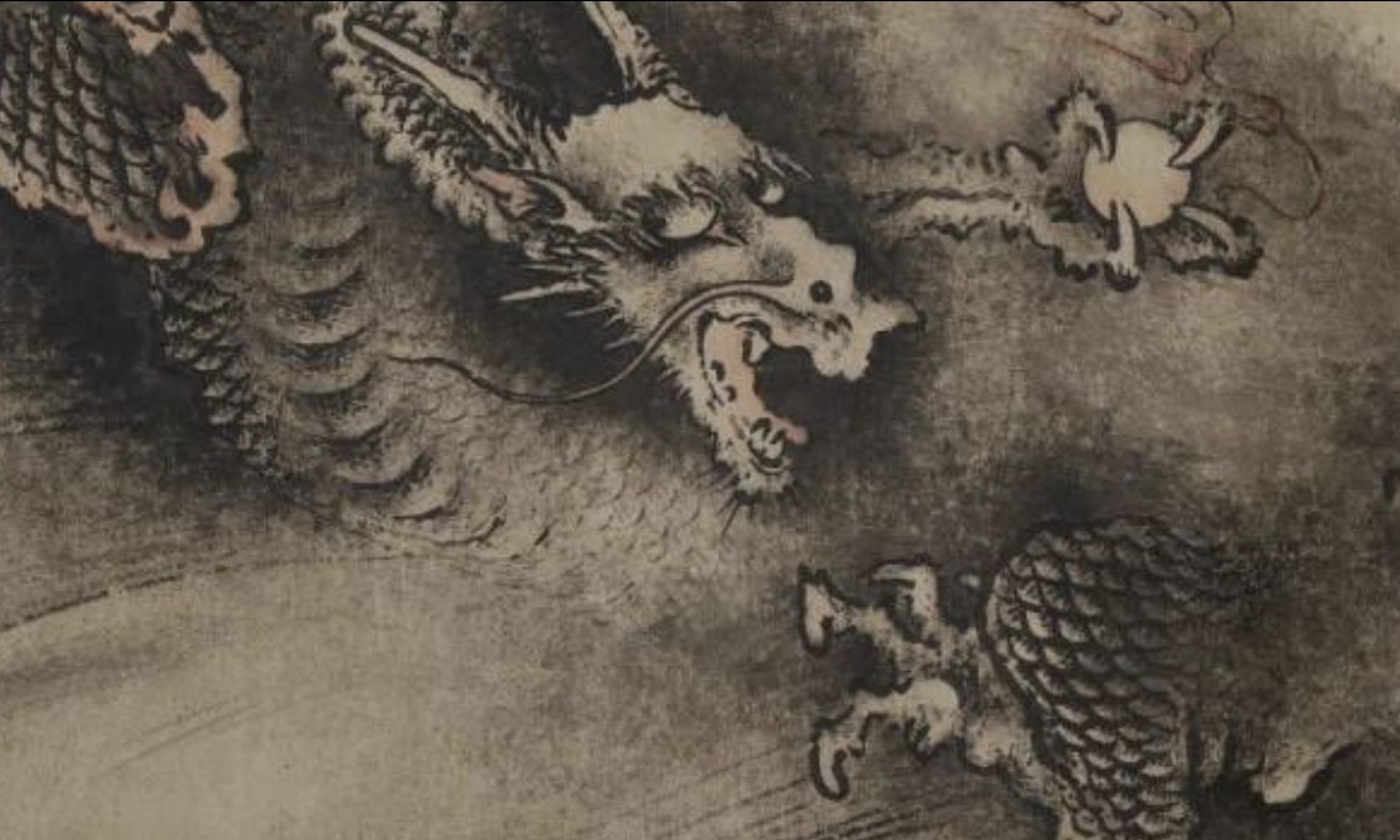Sometimes play is less fun, more traumatic
Avid readers of this blog – which, admittedly, is probably just me (and, yes, I do avidly read my own writing) – will recall that I more than once suggested to Tony Smith that choosing a more playful activity than obsessing about the cool to frigid reception (when received at all) of his theoretical physicists (TP) ideas by the Establishment might improve his state of mind. Since his passing I came to the conclusion I should have just kept my advice to myself. It could be likened to trying to convince a tiger to go vegetarian. It’s simply not in the tiger’s nature to thrive on beans and kale, and their health would suffer in making the effort.
In my Tony Smith eulogy blog I quoted from several of his emails, one of which ended with this:
“PS – As to Girls Last Tour – if it or its author is suicidal then I do not need to get into it. From what the web says of the Manga ending it seems as though they die without either clear victory or defeat with respect to their life goals.”
Let’s talk about this.
I have been a fan of animation from early childhood through to right now, where that “right now” will be every “right now” from this “right now”, at this very moment, until I breath my last and end experiencing any more “right nows” (although I am not averse to having more after breathing my last, but my hopes are not high on that score). I mentioned to Tony at one point that my latest animation fixation was an anime series call Girls’ Last Tour, and I was finding it a quietly enthralling work of art – the anime; I have since gone through the entire manga series. The former is video; the latter a series of graphic novels.
For many of you, I’m guessing, anime viewing is not a proper adult pastime, and it conjures images of large-eyed teens emoting dramatically, and perhaps carrying big-ass swords that may be used on monsters. This is a signal to noise problem. In this case the noise is the surfeit of animes devoted to big eyed teens with magical powers, or just moping about in school experiencing angst. The signal, if you will, are those far less frequently encountered gems, like almost anything from Studio Ghibli. (Oh, and if it isn’t clear by now, let it be known that I am not a proper adult, and proper adult pastimes I often find soporific.)
Ghibli animations involve very inventive stories that evolve in ways that I find thematically unWestern. One frequently encounters characters who early on behave in ways that my rearing in the USA has inured me to think of as villainous. One disapproves, and one expects these characters to get a heaping helping of comeuppance in the final act. This very rarely if ever happens in Ghibli stories. Not only is there a dearth of comeuppance, but the purported villain may actually in the end move in with the central characters as part of a congenial family unit. It’s all oddly refreshing.
Anyway, Girls’ Last Tour is none of the above. Yes, its central characters are school age, and yes, their eyes are on the large size. But they aren’t in school, because there are no more schools. There are hardly any other people at all, and you only ever encounter two, and neither of these are central to the story. As to that, there is very little story in any conventional sense. It’s just these two young girls wandering through a post apocalyptic cityscape in a mechanical conveyance called a Kettenkrad. At one point, we are informed in flashbacks, there was a world of adults at war. A parental figure, wanting to save the girls, sent them away from the war zone on the Kettenkrad. They were evidently told to get to the highest part of the city.
In episode 1 of the animation the warring adults are gone. Exterminated. We don’t know this yet. We just see the Kettenkrad and its occupants tootling along in a dark interior space. This space is an old industrial space full of pipes and fans and dripping and loose screws. And dark. So dark.
Initially you have no idea who the kids are, whither they are traveling, and why. As to the where – the milieu – this future city is ultimately revealed to be very bizarre, with whole conventional cityscapes built in levels stacked very very high above each other, held up and connected by gigantic columns. It’s hyper-industrial, and much of it is in decay. This is due to the war – now some years in the past – and the subsequent lack of maintenance.
At the end of the first episode I felt confused and bemused. What was this? Did anything happen? The kids traveled, ate (food is a running theme), and argued. Is there a story arc? I wasn’t sure, and for some time I didn’t watch any more. But two things brought me back finally: the artwork was grand in a darkly mysterious way; and I needed to know what I had watched. Oh, and I lack the maturity to forego.
The anime does not take the girls as far as the manga, although it is rumored there will be a season 2 following the final journey of the potatoes (which is the endearing term applied to the girls by fans of this work of art). Season 1 of the anime ends on a note that is potentially upbeat. Things have happened. They’ve had encounters with two other people, and some things that weren’t people, but all these people and things are out of the picture at the end, and the potatoes continue their travels, heading where we believe they were told to go by the parental figure long ago. Well, I was now hooked, so …
Then I bought the manga books and finished the story. Dark and mysterious. Metaphorically dark. Existentially dark. In fact, they do get to the highest level, and it is a flat snow covered plain with a single feature: a (possibly) concrete cube thing with markings under the outermost layer (that we do not see at first). It’s not big – maybe six feet high or so. To get to this point the girls have lost or left behind almost everything that was of value to them. But the view is spectacular. They have a snowball fight, look at the sunset, then sit next to the cube and eat the last of their food. Then they decide they should get some sleep.
The End.
What?
As Tony wrote after looking online for more information, “… it seems as though they die without either clear victory or defeat with respect to their life goals.” Well, we never see them die, and in the last frame of the manga the girls are gone, and a portion of the cube has broken off revealing glyphs on an inner layer. But many have argued that this open end is devoid of hope. They had just enough food to get to the top, and now to escape that place they’d need to walk, for the Kettenkrad is irreparably broken. Moreover, the city itself – oh yes, the city – the world – well … but I’ve said too much.
Tony (as well as the creator of Girls’ Last Tour, online gossip would lead us to believe) fought depression for many years. And Tony died like the potatoes, without either clear victory or defeat with respect to his life goals. I myself expect to die like that, but in the meantime I’m going to emulate the potatoes, watch the sunset, have a snowball fight when the opportunity affords itself, and in general bathe in the warm waters of my immaturity.
Yet another metaphor
So, yes, the TP mainstream (to which I’ll assign an endearing moniker: the tomatoes), spent over 40 years tootling in their Kettenkrad through a huge dark and mysterious cityscape. Mixing metaphors, the tomatoes had created a theoretical speculative bubble, buying on margin, and hoping JP Morgan (the LHC) would bail them out and prevent the collapse of their businesses. But JP Morgan didn’t bail them out, and those bright young souls drifted disconsolately away to other things – intellectual hobos, as it were. Once cutting edge, they are now the old guard, loitering outside the local candy store hoping for a handout.
String theory, in particular, very rarely gets discussed in the pop sci press anymore, nor are there very many colloquia on the topic – at least in the Boston area. Its two most prominent spokespeople – Michio Kaku and Brian Greene (both of whom were in the past involved with some quite saccharine video content extolling the wonders of string theory), have drifted into podcasts and books with a more generic sort of content. Still, they’re bright and have creative energies that need an outlet or two, so I’ve no problem with any of that.
Ishii’s story
Ok, that’s enough for the nonce of TP’s Last Tour. I’m not done discussing Girls’ Last Tour. You can build your own metaphors.
One of the two adults the potatoes encounter in their tour is a woman named Ishii. She has been living by herself and is trying to make an airplane – sort of a Wright brothers like machine. She wants to use it to escape the city. She needs help, and promises the potatoes that she will fix their wonky Kettenkrad in return for help getting her plane together. All this done, she hops on board, flies off, and the plane seems to be working fine. But then in the distance the potatoes see a wing break, and Ishii is forced to bail out and parachute down to a much lower part of the city. We focus on her face, see her wan smile as she drifts down. And she says (or maybe just thinks): “But, well, once you fail, you feel so carefree.” She drifts out of sight, and we never see her again. One review online had this to say:
“Ishii’s story was one of my favorites in the comic and in the anime, there’s something really beautiful about a little story centered around the highly optimistic concept of ‘Even if you fail, it’s still okay’ framed against the actual apocalypse. The last Pilot on earth crashed, and it’s okay.”
I hope string theorists, and supporters of other TOE ideas – ideas that will likely fail to escape the city in their lifetimes – can achieve that carefree feeling. I wish that Tony had. I hope that I do. Sometimes I think I’m there.
So … snowball fight, anyone?


